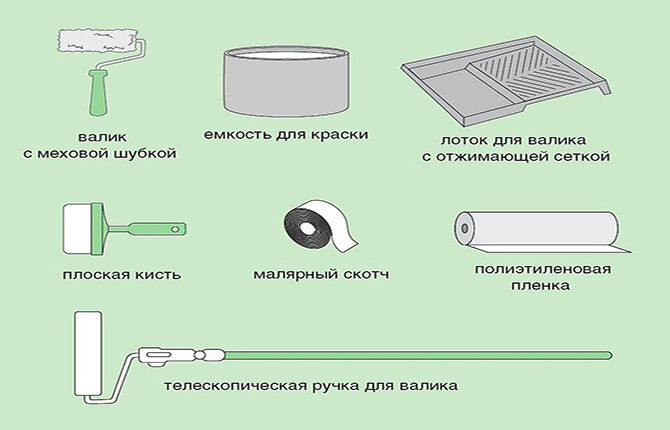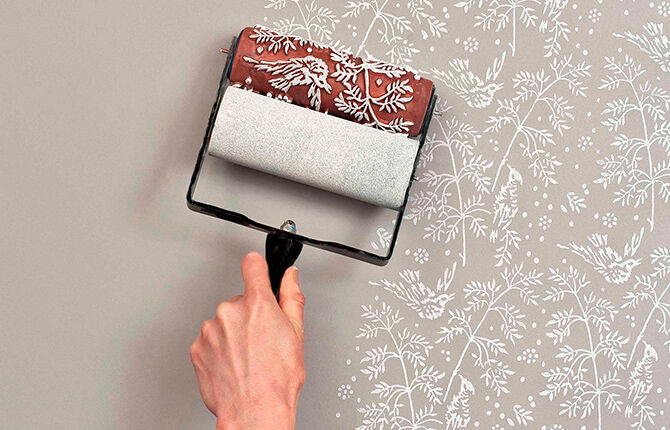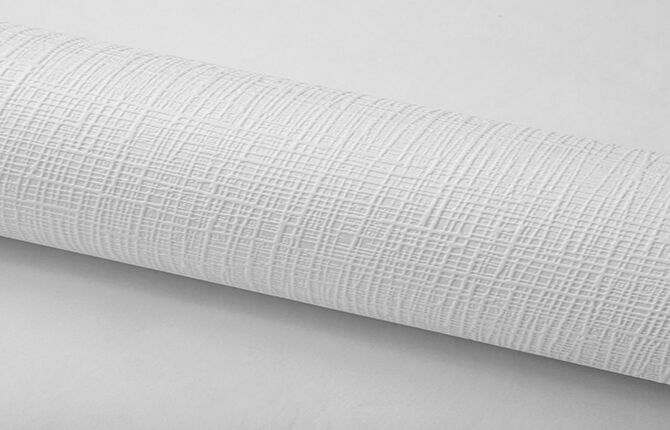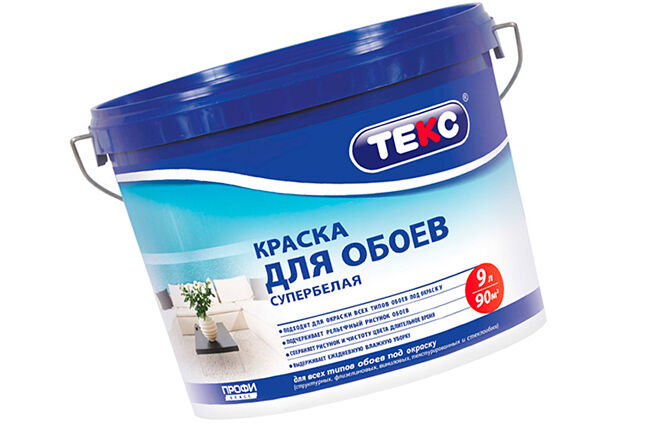How to paint wallpaper with your own hands - step-by-step instructions
Painting wallpaper makes repairs much easier and saves your budget. In addition, it is practical, convenient, and economical.Paintable wallpaper will last for decades, and can be repainted every six months. But it is important to know how to do it correctly.
The content of the article:
How to choose paint
When choosing paint for wallpaper, take into account the walls (or ceiling) in which room will be painted. This way you can understand what impact the surface will be exposed to:
- pollution;
- touching with hands;
- humidity;
- high (low) temperature;
- influence of ultraviolet radiation, etc.
Taking these circumstances into account will help you choose a dye with the desired characteristics.
The environmental friendliness of the coloring composition should also be taken into account. Even the most natural canvas under a layer of heavy oil paint will stop “breathing.”
When painting wallpaper, experts advise choosing the following types of paint:
- water-based;
- water-dispersed;
- latex;
- acrylic.
“Water emulsion” is the most environmentally friendly and affordable type of coloring mixture. It is safe, perfectly breathable, easy to apply and does not peel off. When the water emulsion dries, there is no odor.
Depending on the filler, water-based paint is divided into mineral, silicone, silicate, and acrylic. Each type has its own characteristics:
- mineral - easy to apply, but does not last long, is afraid of moisture. Surfaces painted with it cannot be washed;
- acrylic - durable and elastic, but expensive;
- silicate – durable, but does not tolerate high humidity;
- silicone - protects walls from mold, but is more expensive than others.
Water-dispersion paint is prepared on the basis of water dispersion and binding components (acrylic, latex, polyvinyl acetate (PVA)).
PVA-based dye makes the painted surface durable, but vulnerable to moisture. Canvases coated with this paint require dry cleaning only. Therefore, this paint should not be used for painting walls in the bathroom or kitchen. But it is resistant to ultraviolet radiation and retains its original appearance for a long time.
Latex water-dispersion paint is not afraid of either dirt or water. Acrylic – even high humidity is not dangerous. Water-dispersion paint is more durable and affordable compared to water-based paint.
Latex paint contains rubber particles and makes the coating waterproof. Therefore, wallpaper painted with it can be washed frequently with water and detergent. Latex paint is suitable for painting walls in the bathroom or kitchen.
Advantages:
- breathable;
- dries quickly;
- does not release toxins;
- protects wallpaper from fading.
Acrylic paint allows air to pass through and prevents the appearance and proliferation of microorganisms. It forms a moisture-resistant film on the painted surface, which protects the walls from dampness. Acrylic paint:
- non-toxic;
- dries quickly;
- resistant to physical impact.
These properties allow it to be used in a child’s room and bedroom.
Paints vary in reflective ability:
- glossy - reflects light, creating the effect of a mirror surface. Helps visually expand a small room;
- matte (semi-matte is also available) – hides surface defects and also creates coziness in the room, dimming bright light;
- satin - has a moderate shine, reminiscent of the shine of satin fabric.
The next step is choosing a color. You can buy ready-made paint in the color you like or tint it white.This is easy to do using tinting paste, which is sold at any hardware store. You need to tint the entire volume of paint at once, otherwise the shade will differ.
In order not to be disappointed with the results of painting, it is worth painting a small section of wallpaper first. When it is completely dry, you can evaluate the color.
How to paint wallpaper correctly
To properly paint the wallpaper you will need:
- roller (one or more different sizes);
- tray (preferably with a squeezing mesh);
- container for diluting dye;
- small brush for corners and areas along baseboards;
- masking tape;
- cloth or sponge to remove accidental drops;
- film for protecting floors and furniture;
- stepladder, chair or telescopic handle for a roller.

Before painting, the surface must be checked for defects. Glue the peeled corners of the canvases, pierce the air bubbles with a needle. If it was necessary to use glue to eliminate errors, painting should not begin earlier than in a day. Only dry surfaces can be painted.
The next step is to clean the wallpaper from dust and dirt. To do this, use a broom, a dry rag, or better yet, a vacuum cleaner at low power. Then the canvases are degreased by wiping with a sponge soaked in soapy water.
Wait until the surface is dry and begin painting. Before painting, non-woven and glass wallpapers are primed. The primer mixture (primer) is applied with a roller or brush in 1-2 layers. You can apply the paint after the primer has completely dried.
The color mixture is diluted and tinted immediately before application. It is better to pour a small amount into the tray and close the container with the working material to prevent it from drying out.Any paint is diluted in accordance with the manufacturer's instructions - the consistency should be similar to liquid sour cream. Before starting work, it is useful to roll velor and fur rollers with masking tape so that they do not leave lint during painting. The optimal temperature in the room for painting work is 17-25 degrees, the windows are closed.
Having completed the preparatory work, begin painting:
- use a small roller or brush to paint strips up to 10 cm wide along the baseboards;
- paint the relief elements with a brush;
- Using a roller well soaked in dye, paint the main part of the surface from top to bottom. Do not keep the roller in one place for a long time;
- If blisters appear on the wallpaper during the painting process, pierce them with a needle and glue these parts of the canvas to the wall.
The second coat of paint may be applied only after the first has completely dried.
If you want to apply a design to the wallpaper, use a textured roller, stencil or stamp.

Paintable wallpaper: types and features
Obviously, ordinary paper wallpaper should not be painted. Perhaps it will turn out original, but definitely not aesthetically pleasing.
Wallpaper intended for painting is more durable and does not change its structure after applying the dye. In most cases, they have a special relief that remains after staining, but they can also be smooth.
There are 3 main types wallpaper for painting:
- non-woven;
- vinyl;
- glass wallpaper.
Non-woven wallpaper
Non-woven wallpaper is a durable non-woven material based on cellulose and textile fibers. Non-woven fabric:
- is highly stable;
- does not stretch when wet;
- does not shrink when dry.
The canvas is so durable that it can prevent the appearance of microcracks in the walls.
Strength non-woven wallpaper depends on the density of the non-woven fabric used: from 60 to 150 g/m². For the living room, 85-90 g/m² is suitable, but for the kitchen and hallway it is better to choose stronger options.

The moisture resistance of non-woven fabric depends on the type of protective layer covering it. The manufacturer places information about the rules for caring for wallpaper on the roll label. In one case, water and detergent will be acceptable, and in the other, only a damp sponge.
The coating is environmentally friendly, breathable, and therefore can be used in a nursery. In addition, it is fireproof.
Non-woven wallpaper for painting can be smooth or textured. The canvases are usually white or light yellow. The roll label contains a marking indicating that the wallpaper is intended for painting.
Non-woven fabric can withstand 8-10 repaintings. The paint must be water-based, since the organic solvents in its composition are harmful to cellulose fibers.
Manufacturers often apply a three-dimensional pattern made of vinyl, flock or polyurethane to a non-woven base. This top layer significantly changes the characteristics of the canvas, in some cases making it unsuitable for painting. Therefore, it is important to understand whether you are buying non-woven or non-woven wallpaper.
Vinyl wallpapers
Vinyl wallpaper consists of two layers: a base and a protective coating. The base is made of non-woven fabric or thick paper. The protective coating consists of polyvinyl chloride (abbreviated as PVC, colloquially known as vinyl). This structure makes vinyl wallpapers durable, so they are easy to glue even for amateurs in repair matters.
Vinyl fabric is resistant to moisture and can be cleaned with a cloth dampened with water or a cleaning agent. At the same time, it is not exposed to sunlight and does not fade for years.
Vinyl wallpaper is a godsend for supporters of unusual design. They offer a wide selection of textures - imitation of the surface of wood, ceramics, plaster, suede.
But, along with all these advantages, vinyl wallpaper has one significant drawback. They don't "breathe". This means that mold may appear under the canvas. It is risky to cover the walls in a child’s room or bedroom with vinyl wallpaper. To protect walls from the appearance and development of microorganisms, professionals use special antibacterial glue.
It is recommended to paint only vinyl sheets that are specifically designed for painting. Ordinary paper-based vinyl wallpaper is not suitable for this purpose.
A dye with any composition is suitable for painting vinyl wallpaper. Water-based paint will create a noble matte surface. A product based on acrylic or latex will make the surface festively glossy.
To get a rich, long-lasting color, apply the paint in 2 layers. Vinyl wallpaper can be painted both from the outside and from the inside. They can withstand up to 10 repaints.
Glass wallpaper
Fiberglass wallpaper is made from special fiberglass based on:
- quartz sand;
- soda;
- clay;
- dolomite;
- limestone.
These are natural materials that are safe for humans. At the final stage of production, the canvas is coated with a special starch-based impregnation. It helps maintain a healthy microclimate in the room, protects the canvas from mold, mildew and microorganisms.
Due to its high strength, fiberglass wallpaper will last for decades. They are impervious to moisture and high temperatures, and are easily glued to the wall, hiding its defects. At the same time, the material is breathable. During a fire, glass wallpaper will not catch fire or begin to emit harmful substances, unlike, for example, vinyl wallpaper.
Perhaps the only disadvantage of this coating is the high price.
To paint glass wallpaper, it is recommended to use latex glossy and semi-gloss paints. Application is carried out in 2 stages with an interval of 12 hours.
In addition to the wallpaper material, its texture will be of great importance for interior design:
- large or small drawing;
- imitation of wood, fabric, suede texture;
- floral ornament.
The choice of texture depends on the size and purpose of the room. For example, a large floral pattern is suitable for a spacious living room, imitation fabric will create coziness in the bedroom, and “stucco” will look organic on the ceiling.

Paintable wallpaper is an excellent choice for those who want to frequently change their decor without spending a lot of money, effort and time. Construction stores offer hundreds of types of both canvases made specifically for painting and dyes. The main thing is not to be afraid to experiment and be creative. And during the painting process, strictly follow the instructions.
Have you ever had to paint wallpaper? Write about it in the comments. Share the article on social networks and save it in bookmarks so as not to lose useful information.
You can also watch the video on how to paint wallpaper (secrets from professionals).
Useful literature:
- General technology of finishing construction works. I. Petrova /Tutorial/ – M.: Academy, 2014.
- Wall decoration: painting, wallpaper, ceramic tiles, decorative trim. Advice from professionals. – M.: Niola 21st century, 2004.
- Paints and wallpaper. Encyclopedia of the home master. – Chelyabinsk: Ural LTD, 2000.




